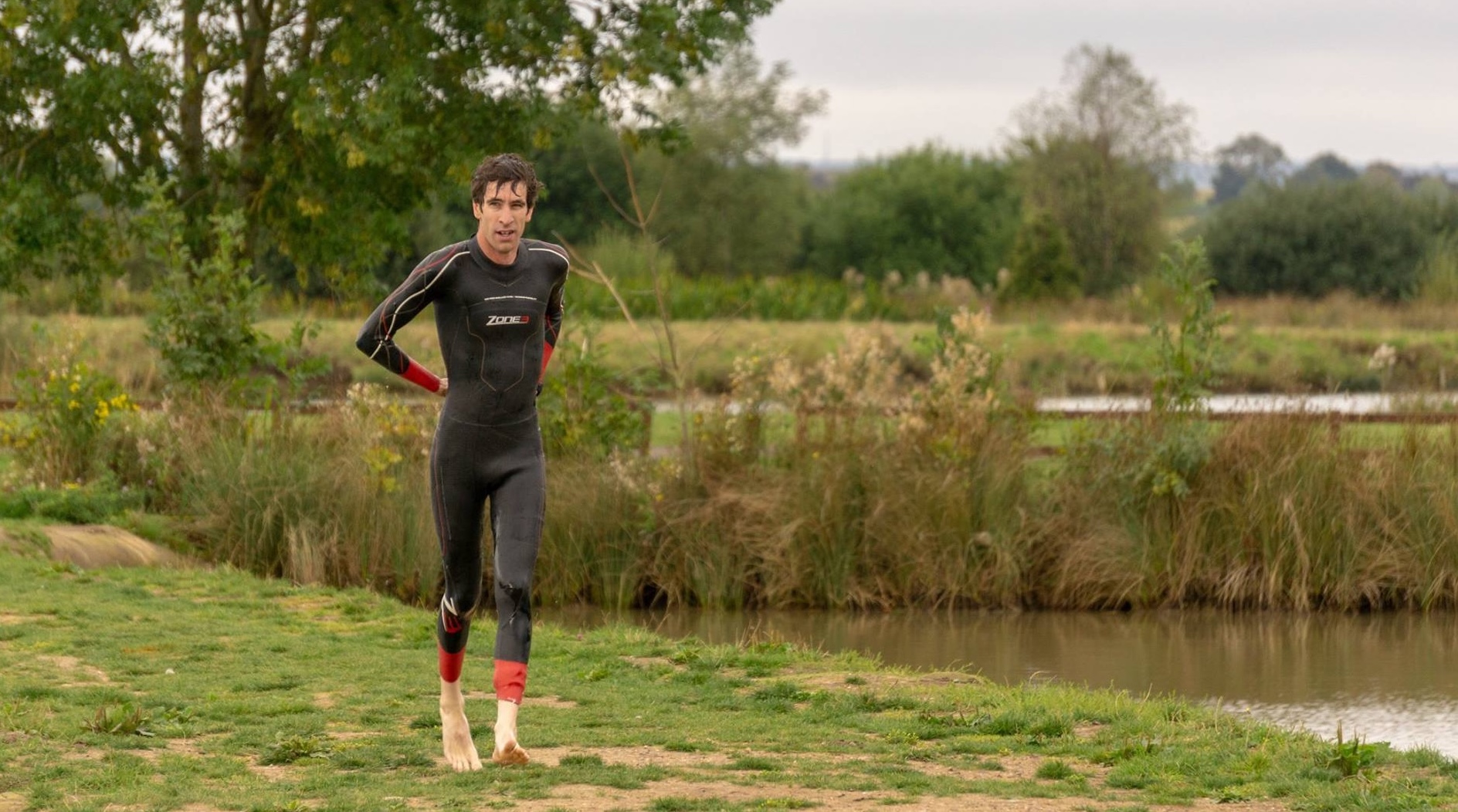This may not be the sexiest of blog posts, but as triathletes we have a reputation of poor bike skills, and this extends to the maintenance of our machines. Today we’re going to look at how to clean your chain to ensure your bike is running at optimum performance for as long as possible.
“But I don’t have the time to clean my bike every ride, I put it in for a service every year!” I hear you cry, but do you also tend to acquire a bill for a long list of replacement parts with every service and think “Blimey, this cycling lark is expensive!”? While all components need to be replaced eventually, their lifespan can be multiplied ten fold with a bit of TLC.
After shorter rides you can get away with a quick wipe of the chain, but once every 200KM or so you’ll need to give your drivetrain a proper clean.

I’ve been selflessly letting the chain on my commuter bike get dirty to demonstrate the method to you, and as you can see a large amount of black gunk has started to attach itself to the chain, creating a black paste which will eat away at our components, wearing them away and requiring replacement parts to optimise shifting and performance. A tell tail sign that your cassette/chianset needs replacing is when the notches on the cogs start to resemble a shark’s fin rather than a smooth, symmetrical tooth. If in doubt, take it to your local bike shops, most bike mechanics are honest and will give you an estimation of how long you have left in your components.

To start the cleaning process we first need to give the bike a good wash down with a hose. Cleaning your drivetrain is a dirty job and you WILL get grease on you and your clothes, I’d hate for you to get black specs all over your brand new Ironman finisher’s shirt, so wear something you don’t mind getting a bit dirty. If you don’t have the luxuary of a garden then make sure you carry out the work above a surface you can wipe clean, and substitute the hosing down with a thorough wiping down of the chain. The aim is to dislodge any bits of grit and dirt that my be hiding between the links before we get serious
 Take this point to notice how the raised areas of the chain are cleaner than the rest of the chain. This is a result of the chain rubbing against the front mech and reminded me that I needed to adjust the limit screws to minimise chain rub which lowers the life of your chain as well as creating an incredibly annoying grinding sound.
Take this point to notice how the raised areas of the chain are cleaner than the rest of the chain. This is a result of the chain rubbing against the front mech and reminded me that I needed to adjust the limit screws to minimise chain rub which lowers the life of your chain as well as creating an incredibly annoying grinding sound.
Before we clean the chain itself, let’s the the opportunity to clean all the easily accessible working parts, namely the chainset and the jockey wheels. As you can see below, these are prone to attracting black gunk from the road as they sit right in the firing line

Probably not the best example as I’m generally pretty good at cleaning them and there’s a limit to how dirty I’m going to let my bike get for an article, but it’s important we get rid of this before we clean the chain, otherwise it’ll be black again by the time we get to the bottom of the road. The best way to do this is spinning the crank and using a screwdriver to remove the offending muck

This is preferable to wiping them down as any cloth you use is liable to getting dragged into the workings of the rear mech. Also check the chainset (front gears) for any dirt, then we’re good to start on the chain.
 It’s finally time to clean the chain itself, and for that we will need degreaser. Degreaser is perfect for getting rid of pesky grease that builds up on your chain, but also very good at stripping useful grease from your bottom bracket and wheel hubs, so to avoid the powerful chemicals getting into these areas I use a chain cleaning tool, specifically the Park Tool Cyclone pictured. Notice the number of bristles on the inside of the machine, the real problem is not the visible dirt on the outside of the chain but the paste that has made its way into the links of the chain where it is eating away at the metal. The bristles are there to get to the difficult pieces of dirt that you can’t reach simply by wiping the chain down. Fill the tool up to the indicated level with degreaser and then seat the machine over the chain, clipping it closed to sit on the chain like so:
It’s finally time to clean the chain itself, and for that we will need degreaser. Degreaser is perfect for getting rid of pesky grease that builds up on your chain, but also very good at stripping useful grease from your bottom bracket and wheel hubs, so to avoid the powerful chemicals getting into these areas I use a chain cleaning tool, specifically the Park Tool Cyclone pictured. Notice the number of bristles on the inside of the machine, the real problem is not the visible dirt on the outside of the chain but the paste that has made its way into the links of the chain where it is eating away at the metal. The bristles are there to get to the difficult pieces of dirt that you can’t reach simply by wiping the chain down. Fill the tool up to the indicated level with degreaser and then seat the machine over the chain, clipping it closed to sit on the chain like so:

The tool keeps the worst of the degreaser inside its workings, but you’re doing well if you manage to avoid the splatter that can erupt from the end of the roll. I recommend keeping it as level as possible to reduce liquid escaping, but you do need to give the chain a good dozen or so rotations to ensure the bristles do their work on the entire chain. If you don’t have a chain cleaning tool you can apply the degreaser using an old toothbrush, but a chain cleaning tool is a wise investment for anyone who regularly rides their bikes.

The chain is already looking much better, especially compared to the cassette behind it. Next up we need to give the chain a thorough wiping down to get rid of the degreaser.

Give the chain a good few spins through the rag, ensuring you clean every surface of the chain, and we’re rewarded with a nice shiny drivetrain.

We’re already looking a lot better, and you’d be forgiven for wanting to jump straight onto your sparkling steed and heading straight out for a spin, but there’s one more final step to be completed. Remember how I said degreaser removed grease both good and bad? Well we need to re-lube our chain. Notice I used the word lube (pipe down at the back) rather than grease, we need to use a cycling specific product as using standard grease would act as a magnet to grit and clog up our drivetrain.

There are two varieties of grease that are commonly used, wet and dry. Dry lube is much thinner and designed for use in warmer, dryer conditions. Wet lube is much thicker and recommended for use in challenging conditions, so riding in the UK essentially. The reason for this is wet lube is much heavier so harder to displace, but it’s also stickier so attracts more dirt and dust, requiring more regular reapplication. Dry lube tends to be washed out of your chain quite rapidly when the heavens open in my experience.
As I’ll be riding this bike in all conditions I tend to use wet lube most of the time, but may use dry on my race bike when the forecast is good. Whichever you choose, give it a good shake before you apply it to ensure the application agent and the lube bond correctly.

It is best applied at the cassette, slowly turning the pedals while applying the lubricant to the rolling chain, until the entire chain has been covered. We now leave the chain for 5 minutes, so grab yourself a drink and a snack while we wait for it to seep through into the links of the chain.
Remember what I said about wet lube attracting dirt? Well we want to reduce this as much as possible, so after we’ve waited for the lube to seep into the chain, we wipe off any excess lube with a rag. This is very important to ensure you don’t attract more dirt, creating the dreaded black paste.

We now need to wash the bike down once again, and this time go over the whole drivetrain (preferably the rest of the bike as well) with hot soapy water, scrubbing away the excess grit and grime, as well as any remaining degreaser from our sparkling chain.
The eagle eyed among you may have noticed that my cassette in the last couple of photos is matching my nice clean chain. The cassette doesn’t tend to attract gunk in the same way as the other drivetrain components so cleaning it is optional but it’s worth giving it a proper degreasing every now and then, if only for aesthetic purposes.

First remove the cassette from the rear wheel, undo the locking ring and pull the cassette into individual rings (the largest 3 rings are normally welded together) ready to clean. Now we’re away from the rest of the bike we can afford to be a bit more rough and ready with the degreaser. Decant a small amount into a container to avoid “double dipping” and contaminating fresh degreaser. We then take an old toothbrush, load it up with degreaser and get to work on the cogs. As you can see, the before/after results are quite satisfying for the minimal work involved. Once all cogs are cleaned, reassemble them in the correct order and reattach your rear wheel.
Now you’re running with a clean, well lubricated chain you may actually feel a slight difference as it rolls and shifts marginally better, as well as looking the part. Most importantly it will vastly reduce wear on your components, saving your the money and hassle of replacing them. All components have a limited lifespan however, so keep an eye on them. Generally the cassette and chainset will only start wearing significantly when the chain stretches over time, so keep on top of that with a chain stretch tool, which slots between links of your chain to indicate how far it has stretched. Regular cleaning will vastly increase the lifespan of your chain, with some people reporting they can get 10,000+ miles out of a chain.
For more information on subjects such as removing your back wheel and cassette which I can’t cover in detail here, enlisting g the services of YouTube or your cycling savvy friends. If you have any questions, drop them in the comments and I’ll do my best to answer.




